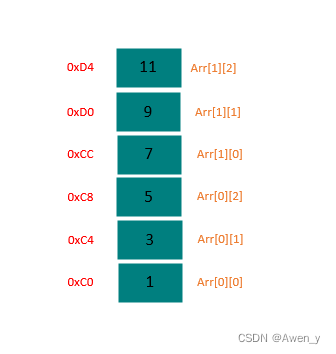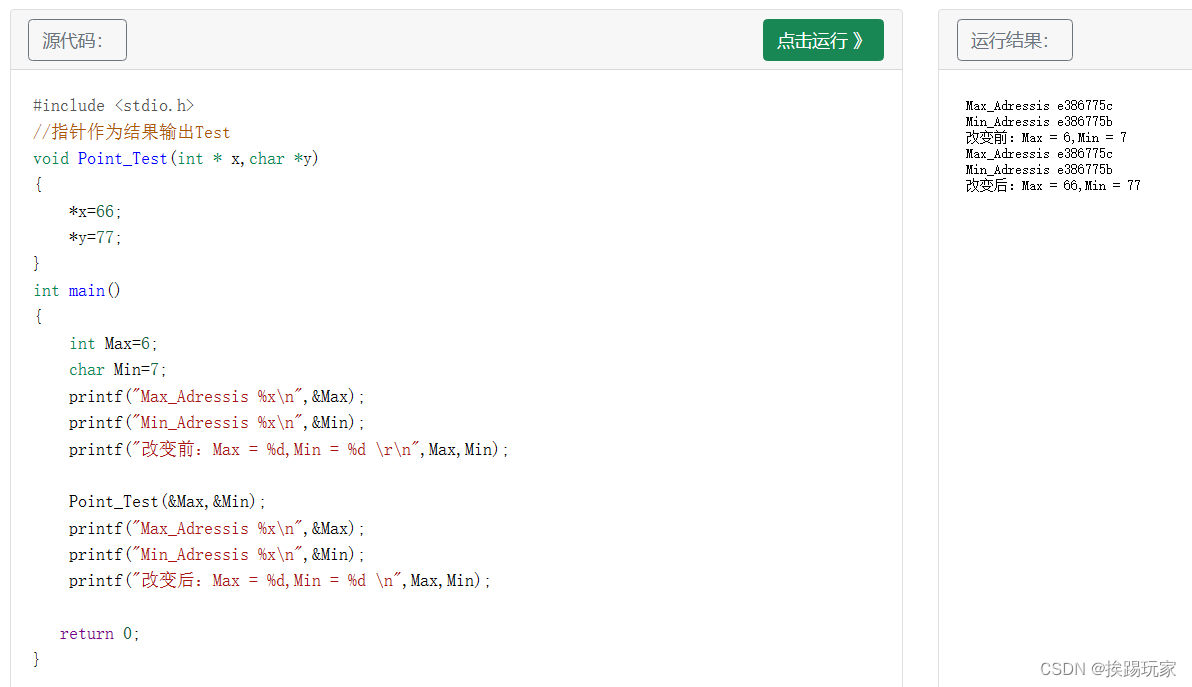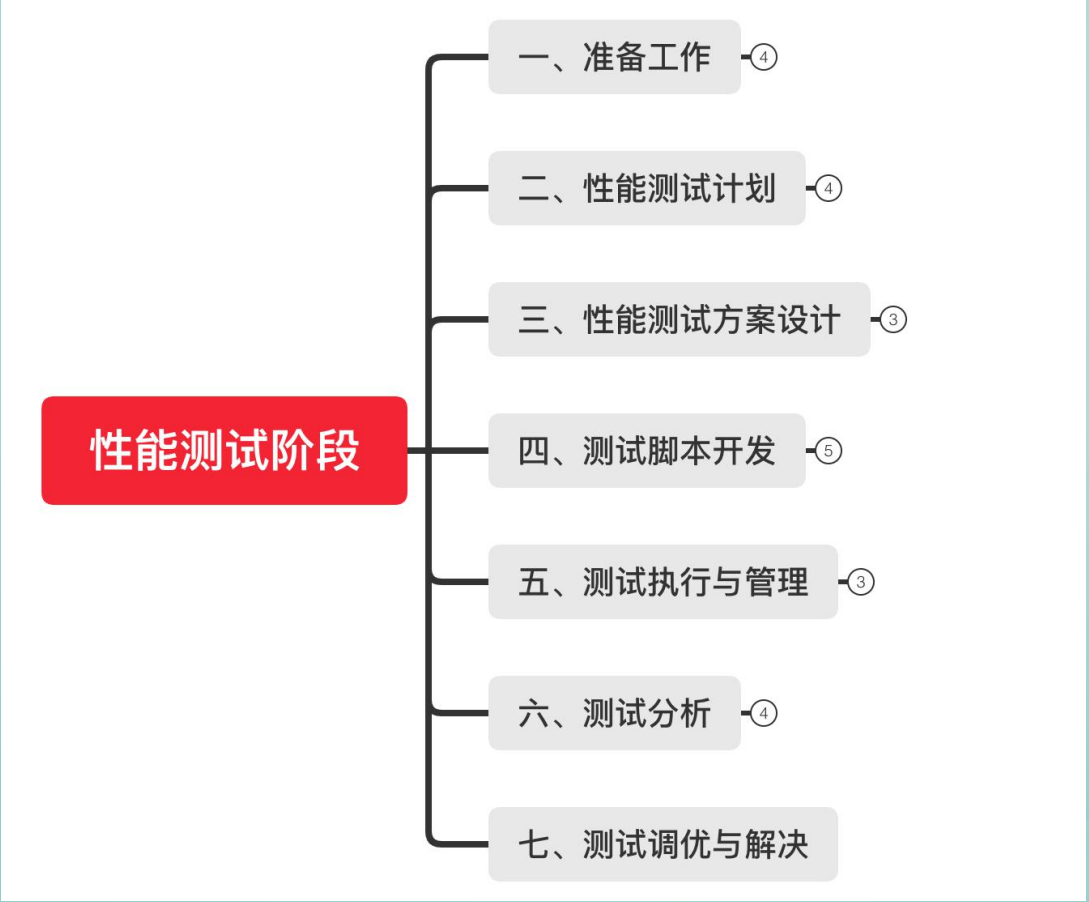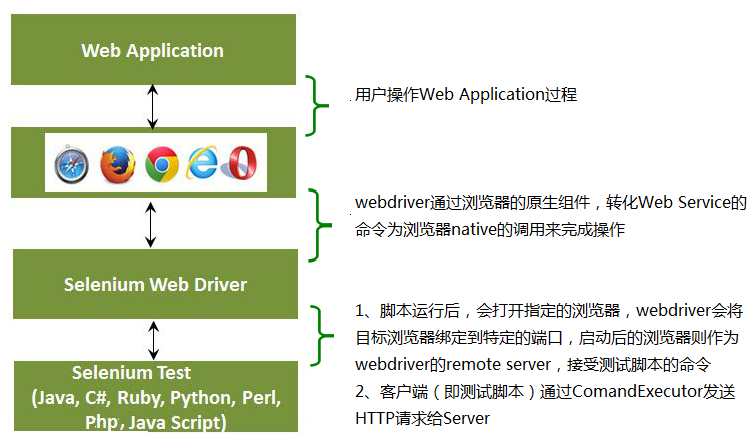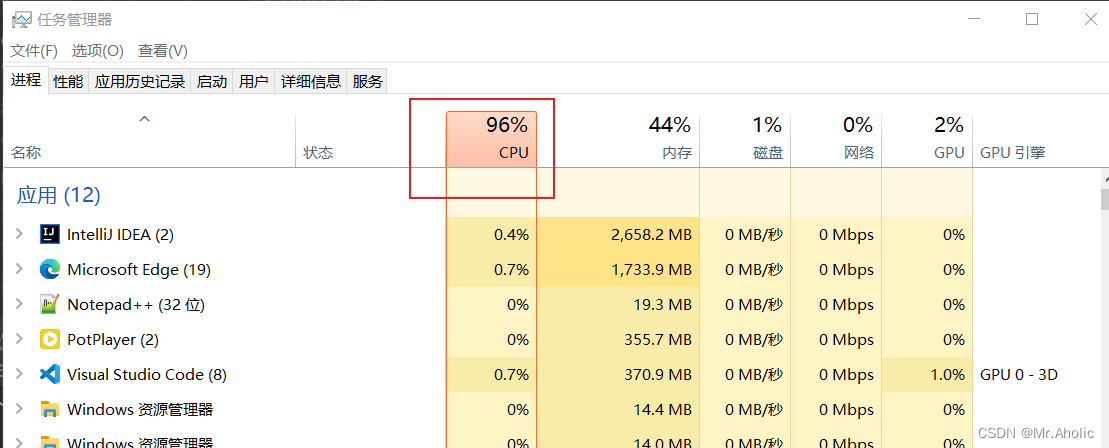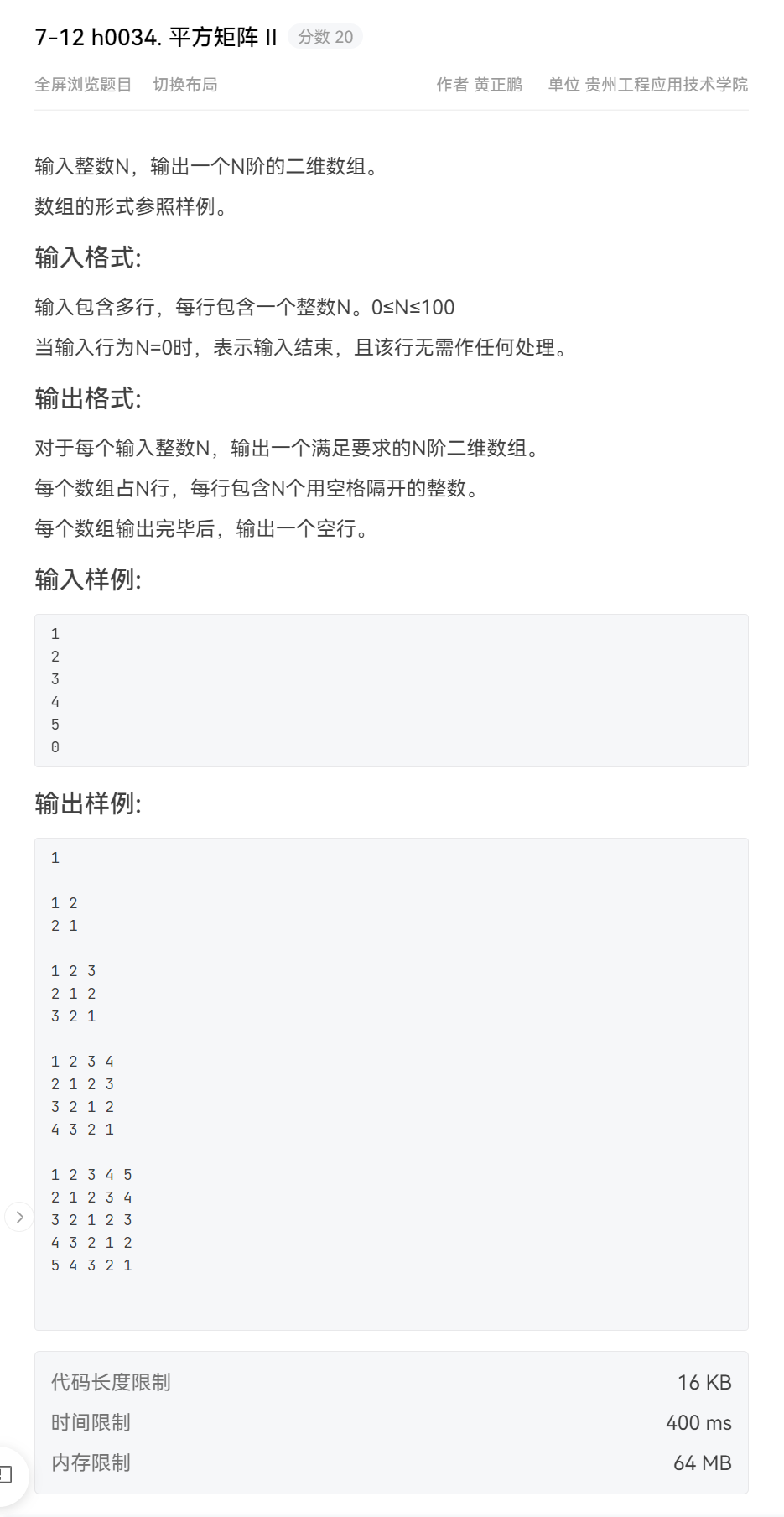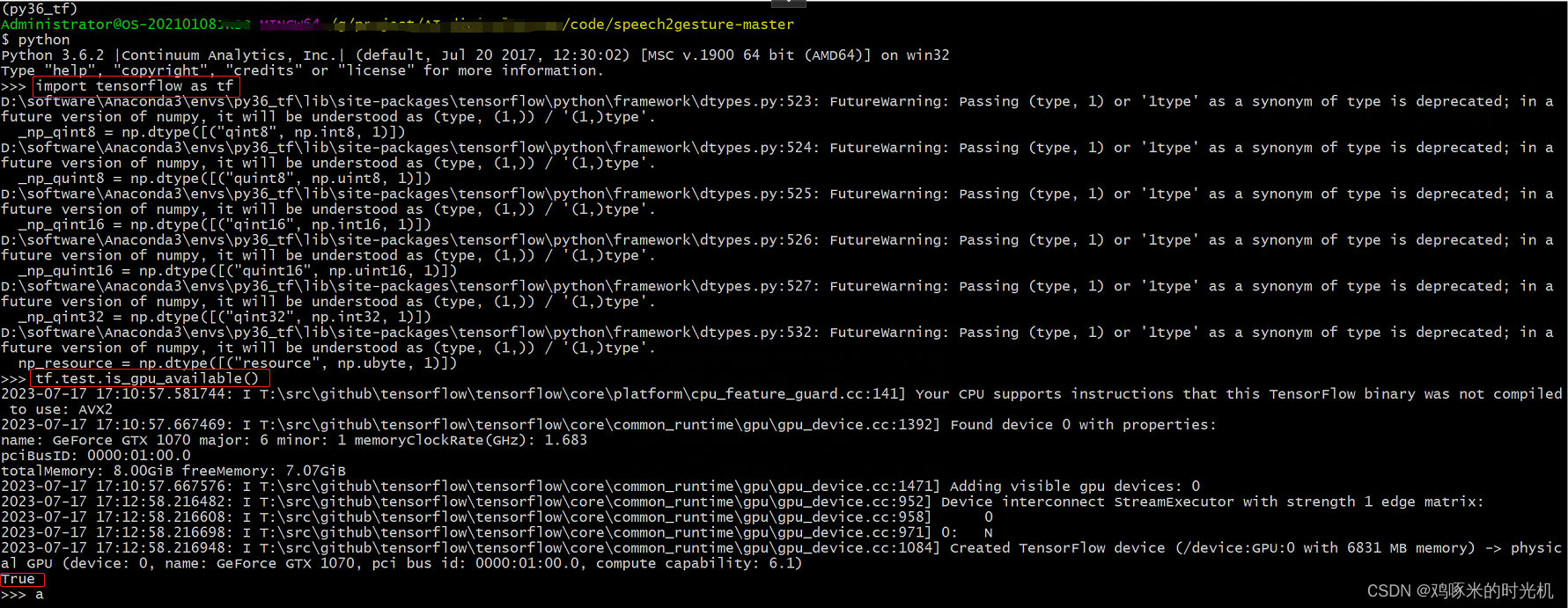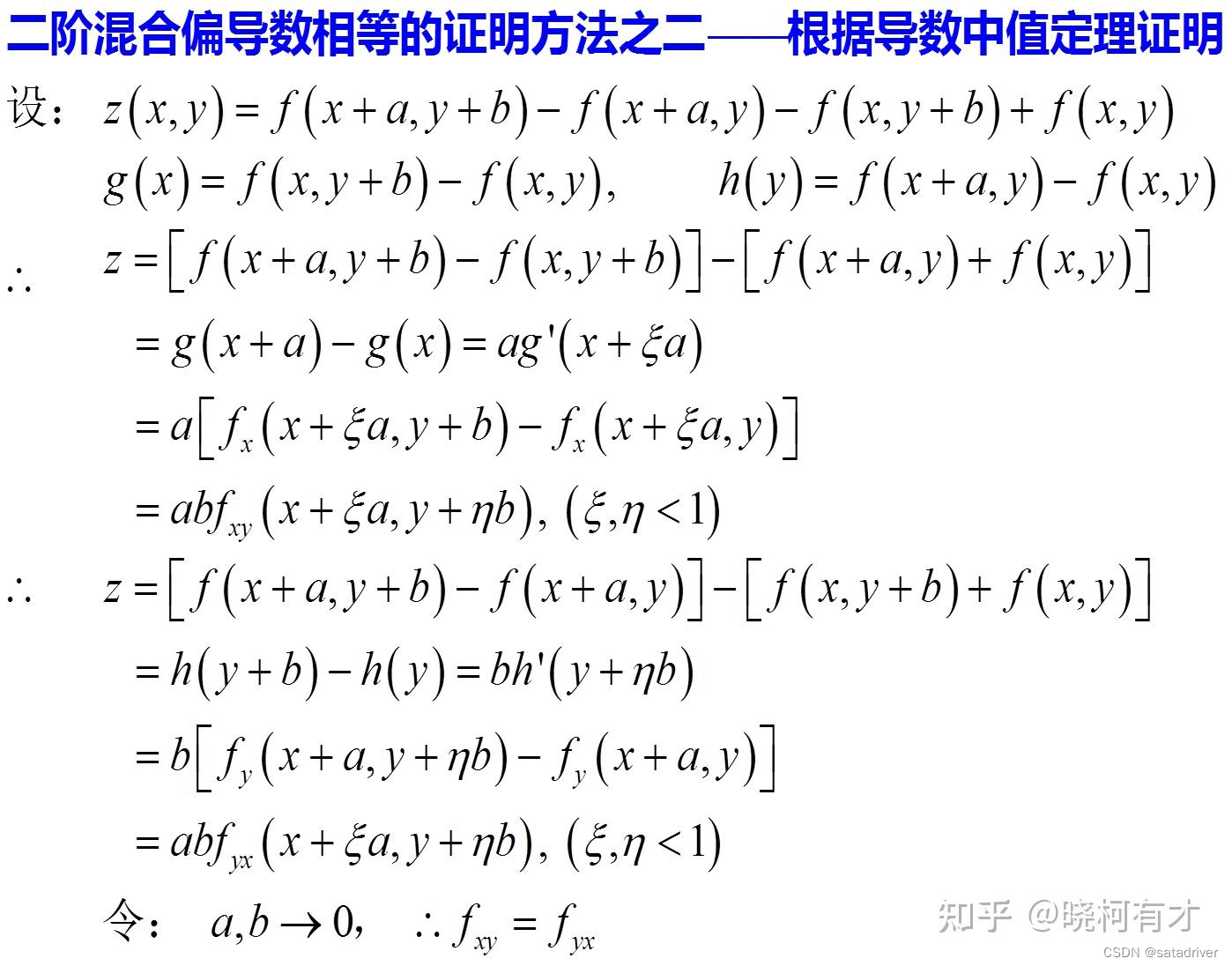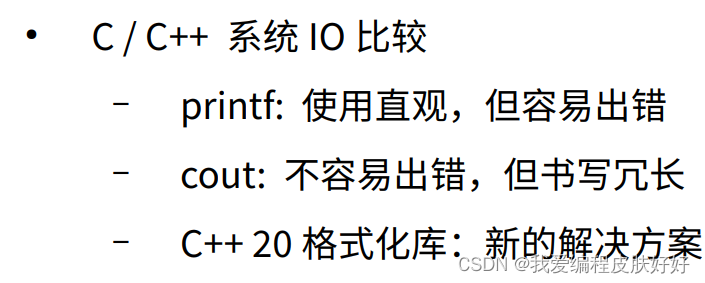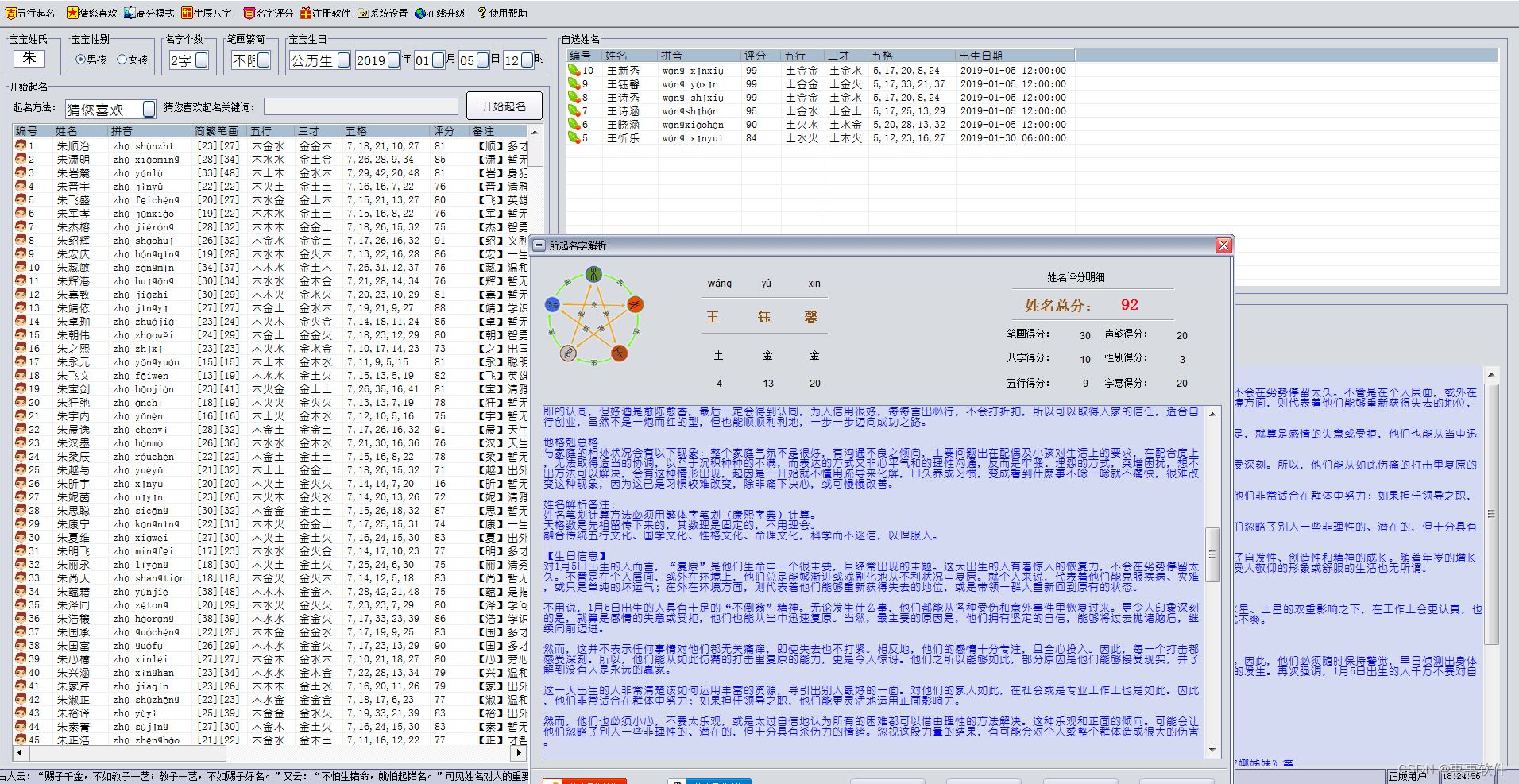
文章目录
- 线程池
- 线程安全的单例模式
- 什么是单例模式
- 什么是设计模式
- 单例模式的特点
- 饿汉实现方式和懒汉实现方式
- 饿汉方式实现单例模式
- 懒汉方式实现单例模式
- 懒汉方式实现单例模式(线程安全版本)
- STL,智能指针和线程安全
- STL中的容器是否是线程安全的?
- 智能指针是否是线程安全的?
- 其他常见的各种锁
- 读者写者问题
- 读写锁
- 读写锁接口
线程池
/* 线程池:
* 一种线程使用模式。线程过多会带来调度开销,进而影响缓存局部性和整体性能。而线程池维护着多个线程,等待着
监督管理者分配可并发执行的任务。这避免了在处理短时间任务时创建与销毁线程的代价。线程池不仅能够保证内核的充分利
用,还能防止过分调度。可用线程数量应该取决于可用的并发处理器、处理器内核、内存、网络sockets等的数量。
* 线程池的应用场景:
* 1. 需要大量的线程来完成任务,且完成任务的时间比较短。 WEB服务器完成网页请求这样的任务,使用线程池技
术是非常合适的。因为单个任务小,而任务数量巨大,你可以想象一个热门网站的点击次数。 但对于长时间的任务,比如一个
Telnet连接请求,线程池的优点就不明显了。因为Telnet会话时间比线程的创建时间大多了。
* 2. 对性能要求苛刻的应用,比如要求服务器迅速响应客户请求。
* 3. 接受突发性的大量请求,但不至于使服务器因此产生大量线程的应用。突发性大量客户请求,在没有线程池情
况下,将产生大量线程,虽然理论上大部分操作系统线程数目最大值不是问题,短时间内产生大量线程可能使内存到达极限,
出现错误.
* 线程池的种类:
* 线程池示例:
* 1. 创建固定数量线程池,循环从任务队列中获取任务对象,
* 2. 获取到任务对象后,执行任务对象中的任务接口
*/
v1
#pragma once
#include <iostream>
#include <string>
#include <vector>
#include <queue>
#include <unistd.h>
#include <pthread.h>
#include "Task.hpp"
const static int N = 5;
template <class T>
class ThreadPool
{
public:
ThreadPool(int num = N) : _num(num), _threads(num)
{
pthread_mutex_init(&_lock, nullptr);
pthread_cond_init(&_cond, nullptr);
}
void lockQueue()
{
pthread_mutex_lock(&_lock);
}
void unlockQueue()
{
pthread_mutex_unlock(&_lock);
}
void threadWait()
{
pthread_cond_wait(&_cond, &_lock);
}
void threadWakeup()
{
pthread_cond_signal(&_cond);
}
bool isEmpty()
{
return _tasks.empty();
}
T popTask()
{
T t = _tasks.front();
_tasks.pop();
return t;
}
static void *threadRoutine(void *args)
{
pthread_detach(pthread_self());
ThreadPool<T> *tp = static_cast<ThreadPool<T> *>(args);
while (true)
{
// 1. 检测有没有任务
// 2. 有:处理
// 3. 无:等待
// 细节:必定加锁
tp->lockQueue();
while (tp->isEmpty())
{
tp->threadWait();
}
T t = tp->popTask(); // 从公共区域拿到私有区域
tp->unlockQueue();
// for test
t();
std::cout << "thread handler done, result: " << t.formatRes() << std::endl;
// t.run(); // 处理任务,应不应该在临界区中处理?1,0
}
}
void init()
{
// TODO
}
void start()
{
for (int i = 0; i < _num; i++)
{
pthread_create(&_threads[i], nullptr, threadRoutine, this); // ?
}
}
void pushTask(const T &t)
{
lockQueue();
_tasks.push(t);
threadWakeup();
unlockQueue();
}
~ThreadPool()
{
pthread_mutex_destroy(&_lock);
pthread_cond_destroy(&_cond);
}
private:
std::vector<pthread_t> _threads;
int _num;
std::queue<T> _tasks; // 使用stl的自动扩容的特性
pthread_mutex_t _lock;
pthread_cond_t _cond;
};
v2
#pragma once
#include <iostream>
#include <string>
#include <vector>
#include <queue>
#include <unistd.h>
#include "Thread.hpp"
#include "Task.hpp"
const static int N = 5;
template <class T>
class ThreadPool
{
public:
ThreadPool(int num = N) : _num(num)
{
pthread_mutex_init(&_lock, nullptr);
pthread_cond_init(&_cond, nullptr);
}
void lockQueue()
{
pthread_mutex_lock(&_lock);
}
void unlockQueue()
{
pthread_mutex_unlock(&_lock);
}
void threadWait()
{
pthread_cond_wait(&_cond, &_lock);
}
void threadWakeup()
{
pthread_cond_signal(&_cond);
}
bool isEmpty()
{
return _tasks.empty();
}
T popTask()
{
T t = _tasks.front();
_tasks.pop();
return t;
}
static void threadRoutine(void *args)
{
// pthread_detach(pthread_self());
ThreadPool<T> *tp = static_cast<ThreadPool<T> *>(args);
while (true)
{
// 1. 检测有没有任务
// 2. 有:处理
// 3. 无:等待
// 细节:必定加锁
tp->lockQueue();
while (tp->isEmpty())
{
tp->threadWait();
}
T t = tp->popTask(); // 从公共区域拿到私有区域
tp->unlockQueue();
// for test
t();
std::cout << "thread handler done, result: " << t.formatRes() << std::endl;
// t.run(); // 处理任务,应不应该在临界区中处理?1,0
}
}
void init()
{
for (int i = 0; i < _num; i++)
{
_threads.push_back(Thread(i, threadRoutine, this));
}
}
void start()
{
for (auto &t : _threads)
{
t.run();
}
}
void check()
{
for (auto &t : _threads)
{
std::cout << t.threadname() << " running..." << std::endl;
}
}
void pushTask(const T &t)
{
lockQueue();
_tasks.push(t);
threadWakeup();
unlockQueue();
}
~ThreadPool()
{
for (auto &t : _threads)
{
t.join();
}
pthread_mutex_destroy(&_lock);
pthread_cond_destroy(&_cond);
}
private:
std::vector<Thread> _threads;
int _num;
std::queue<T> _tasks; // 使用stl的自动扩容的特性
pthread_mutex_t _lock;
pthread_cond_t _cond;
};
Thread.hpp
#pragma once
#include <iostream>
#include <string>
#include <cstdlib>
#include <pthread.h>
class Thread
{
public:
typedef enum
{
NEW = 0,
RUNNING,
EXITED
} ThreadStatus;
typedef void (*func_t)(void *);
public:
Thread(int num, func_t func, void *args) : _tid(0), _status(NEW), _func(func), _args(args)
{
char name[128];
snprintf(name, sizeof(name), "thread-%d", num);
_name = name;
}
int status() { return _status; }
std::string threadname() { return _name; }
pthread_t threadid()
{
if (_status == RUNNING)
return _tid;
else
{
return 0;
}
}
// 是不是类的成员函数,而类的成员函数,具有默认参数this,需要static
// 但是会有新的问题:static成员函数,无法直接访问类属性和其他成员函数
static void *runHelper(void *args)
{
Thread *ts = (Thread*)args; // 就拿到了当前对象
// _func(_args);
(*ts)();
return nullptr;
}
void operator ()() //仿函数
{
if(_func != nullptr) _func(_args);
}
void run()
{
int n = pthread_create(&_tid, nullptr, runHelper, this);
if(n != 0) exit(1);
_status = RUNNING;
}
void join()
{
int n = pthread_join(_tid, nullptr);
if( n != 0)
{
std::cerr << "main thread join thread " << _name << " error" << std::endl;
return;
}
_status = EXITED;
}
~Thread()
{
}
private:
pthread_t _tid;
std::string _name;
func_t _func; // 线程未来要执行的回调
void *_args;
ThreadStatus _status;
};
v3
#pragma once
#include <iostream>
#include <string>
#include <vector>
#include <queue>
#include <unistd.h>
#include "Thread.hpp"
#include "Task.hpp"
#include "lockGuard.hpp"
const static int N = 5;
template <class T>
class ThreadPool
{
public:
ThreadPool(int num = N) : _num(num)
{
pthread_mutex_init(&_lock, nullptr);
pthread_cond_init(&_cond, nullptr);
}
pthread_mutex_t* getlock()
{
return &_lock;
}
void threadWait()
{
pthread_cond_wait(&_cond, &_lock);
}
void threadWakeup()
{
pthread_cond_signal(&_cond);
}
bool isEmpty()
{
return _tasks.empty();
}
T popTask()
{
T t = _tasks.front();
_tasks.pop();
return t;
}
static void threadRoutine(void *args)
{
// pthread_detach(pthread_self());
ThreadPool<T> *tp = static_cast<ThreadPool<T> *>(args);
while (true)
{
// 1. 检测有没有任务
// 2. 有:处理
// 3. 无:等待
// 细节:必定加锁
T t;
{
LockGuard lockguard(tp->getlock());
while (tp->isEmpty())
{
tp->threadWait();
}
t = tp->popTask(); // 从公共区域拿到私有区域
}
// for test
t();
std::cout << "thread handler done, result: " << t.formatRes() << std::endl;
// t.run(); // 处理任务,应不应该在临界区中处理?1,0
}
}
void init()
{
for (int i = 0; i < _num; i++)
{
_threads.push_back(Thread(i, threadRoutine, this));
}
}
void start()
{
for (auto &t : _threads)
{
t.run();
}
}
void check()
{
for (auto &t : _threads)
{
std::cout << t.threadname() << " running..." << std::endl;
}
}
void pushTask(const T &t)
{
LockGuard lockgrard(&_lock);
_tasks.push(t);
threadWakeup();
}
~ThreadPool()
{
for (auto &t : _threads)
{
t.join();
}
pthread_mutex_destroy(&_lock);
pthread_cond_destroy(&_cond);
}
private:
std::vector<Thread> _threads;
int _num;
std::queue<T> _tasks; // 使用stl的自动扩容的特性
pthread_mutex_t _lock;
pthread_cond_t _cond;
};
lockgroad.hpp
#pragma once
#include <iostream>
#include <pthread.h>
class Mutex // 自己不维护锁,有外部传入
{
public:
Mutex(pthread_mutex_t *mutex):_pmutex(mutex)
{}
void lock()
{
pthread_mutex_lock(_pmutex);
}
void unlock()
{
pthread_mutex_unlock(_pmutex);
}
~Mutex()
{}
private:
pthread_mutex_t *_pmutex;
};
class LockGuard // 自己不维护锁,有外部传入
{
public:
LockGuard(pthread_mutex_t *mutex):_mutex(mutex)
{
_mutex.lock();
}
~LockGuard()
{
_mutex.unlock();
}
private:
Mutex _mutex;
};
线程安全的单例模式
什么是单例模式
单例模式是一种 “经典的, 常用的, 常考的” 设计模式.
什么是设计模式
IT行业这么火, 涌入的人很多. 俗话说林子大了啥鸟都有. 大佬和菜鸡们两极分化的越来越严重. 为了让菜鸡们不太拖大佬的后腿, 于是大佬们针对一些经典的常见的场景, 给定了一些对应的解决方案, 这个就是 设计模式
单例模式的特点
某些类, 只应该具有一个对象(实例), 就称之为单例.
例如一个男人只能有一个媳妇.
在很多服务器开发场景中, 经常需要让服务器加载很多的数据 (上百G) 到内存中. 此时往往要用一个单例的类来管理这些数据
饿汉实现方式和懒汉实现方式
[洗完的例子]
吃完饭, 立刻洗碗, 这种就是饿汉方式. 因为下一顿吃的时候可以立刻拿着碗就能吃饭.
吃完饭, 先把碗放下, 然后下一顿饭用到这个碗了再洗碗, 就是懒汉方式.
懒汉方式最核心的思想是 “延时加载”. 从而能够优化服务器的启动速度
饿汉方式实现单例模式
template <typename T>
class Singleton {
static T data;
public:
static T* GetInstance() {
return &data;
}
};
懒汉方式实现单例模式
template <typename T>
class Singleton {
static T* inst;
public:
static T* GetInstance() {
if (inst == NULL) {
inst = new T();
}
return inst;
}
};
懒汉方式实现单例模式(线程安全版本)
#pragma once
#include <iostream>
#include <string>
#include <vector>
#include <queue>
#include <unistd.h>
#include "Thread.hpp"
#include "Task.hpp"
#include "lockGuard.hpp"
const static int N = 5;
template <class T>
class ThreadPool
{
private:
ThreadPool(int num = N) : _num(num)
{
pthread_mutex_init(&_lock, nullptr);
pthread_cond_init(&_cond, nullptr);
}
ThreadPool(const ThreadPool<T> &tp) = delete;
void operator=(const ThreadPool<T> &tp) = delete;
public:
static ThreadPool<T> *getinstance()
{
if(nullptr == instance) // 为什么要这样?提高效率,减少加锁的次数!
{
LockGuard lockguard(&instance_lock);
if (nullptr == instance)
{
instance = new ThreadPool<T>();
instance->init();
instance->start();
}
}
return instance;
}
pthread_mutex_t *getlock()
{
return &_lock;
}
void threadWait()
{
pthread_cond_wait(&_cond, &_lock);
}
void threadWakeup()
{
pthread_cond_signal(&_cond);
}
bool isEmpty()
{
return _tasks.empty();
}
T popTask()
{
T t = _tasks.front();
_tasks.pop();
return t;
}
static void threadRoutine(void *args)
{
// pthread_detach(pthread_self());
ThreadPool<T> *tp = static_cast<ThreadPool<T> *>(args);
while (true)
{
// 1. 检测有没有任务
// 2. 有:处理
// 3. 无:等待
// 细节:必定加锁
T t;
{
LockGuard lockguard(tp->getlock());
while (tp->isEmpty())
{
tp->threadWait();
}
t = tp->popTask(); // 从公共区域拿到私有区域
}
// for test
t();
std::cout << "thread handler done, result: " << t.formatRes() << std::endl;
// t.run(); // 处理任务,应不应该在临界区中处理?1,0
}
}
void init()
{
for (int i = 0; i < _num; i++)
{
_threads.push_back(Thread(i, threadRoutine, this));
}
}
void start()
{
for (auto &t : _threads)
{
t.run();
}
}
void check()
{
for (auto &t : _threads)
{
std::cout << t.threadname() << " running..." << std::endl;
}
}
void pushTask(const T &t)
{
LockGuard lockgrard(&_lock);
_tasks.push(t);
threadWakeup();
}
~ThreadPool()
{
for (auto &t : _threads)
{
t.join();
}
pthread_mutex_destroy(&_lock);
pthread_cond_destroy(&_cond);
}
private:
std::vector<Thread> _threads;
int _num;
std::queue<T> _tasks; // 使用stl的自动扩容的特性
pthread_mutex_t _lock;
pthread_cond_t _cond;
static ThreadPool<T> *instance;
static pthread_mutex_t instance_lock;
};
template <class T>
ThreadPool<T> *ThreadPool<T>::instance = nullptr;
template <class T>
pthread_mutex_t ThreadPool<T>::instance_lock = PTHREAD_MUTEX_INITIALIZER;
注意事项:
- 加锁解锁的位置
- 双重 if 判定, 避免不必要的锁竞争
- volatile关键字防止过度优化
STL,智能指针和线程安全
STL中的容器是否是线程安全的?
不是.
原因是, STL 的设计初衷是将性能挖掘到极致, 而一旦涉及到加锁保证线程安全, 会对性能造成巨大的影响.
而且对于不同的容器, 加锁方式的不同, 性能可能也不同(例如hash表的锁表和锁桶).
因此 STL 默认不是线程安全. 如果需要在多线程环境下使用, 往往需要调用者自行保证线程安全.
智能指针是否是线程安全的?
对于 unique_ptr, 由于只是在当前代码块范围内生效, 因此不涉及线程安全问题.
对于 shared_ptr, 多个对象需要共用一个引用计数变量, 所以会存在线程安全问题. 但是标准库实现的时候考虑到了这
个问题, 基于原子操作(CAS)的方式保证 shared_ptr 能够高效, 原子的操作引用计数.
其他常见的各种锁
悲观锁:在每次取数据时,总是担心数据会被其他线程修改,所以会在取数据前先加锁(读锁,写锁,行
锁等),当其他线程想要访问数据时,被阻塞挂起。
乐观锁:每次取数据时候,总是乐观的认为数据不会被其他线程修改,因此不上锁。但是在更新数据前,
会判断其他数据在更新前有没有对数据进行修改。主要采用两种方式:版本号机制和CAS操作。
CAS操作:当需要更新数据时,判断当前内存值和之前取得的值是否相等。如果相等则用新值更新。若不
等则失败,失败则重试,一般是一个自旋的过程,即不断重试。
自旋锁,公平锁,非公平锁
读者写者问题
读写锁
在编写多线程的时候,有一种情况是十分常见的。那就是,有些公共数据修改的机会比较少。相比较改写,它们读的机会反而高的多。通常而言,在读的过程中,往往伴随着查找的操作,中间耗时很长。给这种代码段加锁,会极大地降低我们程序的效率。那么有没有一种方法,可以专门处理这种多读少写的情况呢? 有,那就是读写锁。
注意:写独占,读共享,读锁优先级高
读写锁接口
设置读写优先
int pthread_rwlockattr_setkind_np(pthread_rwlockattr_t *attr, int pref);
/*
pref 共有 3 种选择
PTHREAD_RWLOCK_PREFER_READER_NP (默认设置) 读者优先,可能会导致写者饥饿情况
PTHREAD_RWLOCK_PREFER_WRITER_NP 写者优先,目前有 BUG,导致表现行为和
PTHREAD_RWLOCK_PREFER_READER_NP 一致
PTHREAD_RWLOCK_PREFER_WRITER_NONRECURSIVE_NP 写者优先,但写者不能递归加锁
*/
初始化
int pthread_rwlock_init(pthread_rwlock_t *restrict rwlock,const pthread_rwlockattr_t
*restrict attr);
销毁
int pthread_rwlock_destroy(pthread_rwlock_t *rwlock);
加锁和解锁
int pthread_rwlock_rdlock(pthread_rwlock_t *rwlock);
int pthread_rwlock_wrlock(pthread_rwlock_t *rwlock);
int pthread_rwlock_unlock(pthread_rwlock_t *rwlock);

